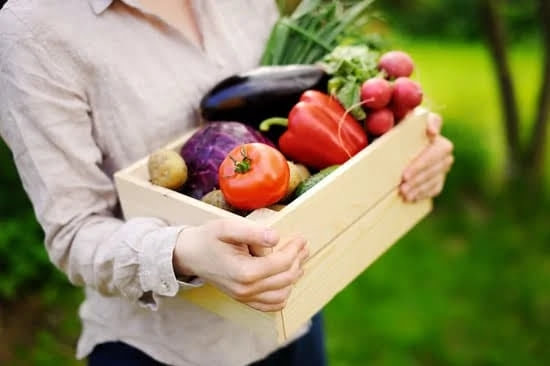In small garden spaces, the concept of growing vegetables vertically has gained popularity as a solution to maximize productivity. Whether you have a tiny balcony, patio, or even just a small corner in your yard, vertical gardening offers a creative and efficient way to grow your own fresh produce. If you’re looking for ideas for small gardens growing vegetables vertically, consider exploring the possibilities that vertical gardening can offer.
By utilizing vertical space, gardeners can overcome limited ground space and still enjoy a bountiful harvest of vegetables. Vertical gardening not only conserves space but also promotes better air circulation and sunlight exposure for plants, leading to healthier growth and potentially higher yields. Moreover, this innovative gardening technique allows for easier access to plants for maintenance tasks like watering, pruning, and harvesting.
In this article, we will delve into the benefits of vertical gardening in small spaces and provide practical tips on choosing the right vegetables, building vertical structures, watering and fertilizing effectively, managing pests and diseases, maximizing space through planting techniques, as well as harvesting and storing your crops. Explore the world of vertical vegetable gardening and discover how you can transform even the tiniest of spaces into flourishing edible gardens with our expert advice and inspiration from success stories.
Choosing the Right Vegetables for Vertical Growing in Small Gardens
When it comes to choosing the right vegetables for vertical growing in small gardens, there are a few key considerations to keep in mind. Not all vegetables are suitable for vertical gardening, so selecting the right ones is essential for success. Here are some popular choices that thrive when grown vertically:
- Tomatoes: Tomatoes are one of the most popular vegetables to grow vertically due to their vining nature. They can be trained to grow up trellises or stakes, saving valuable ground space in small gardens.
- Cucumbers: Cucumbers also do well when grown vertically, with varieties specifically bred for climbing. Vertical growing helps prevent fruit rot and keeps the cucumbers straight for easier harvesting.
- Pole Beans: Pole beans are another excellent choice for vertical gardening. Their vines can climb up trellises or other structures, maximizing space and making picking beans a breeze.
By choosing these vegetables for your vertical garden, you can make the most of limited space while still enjoying a bountiful harvest. Remember to provide adequate support as they grow and consider companion planting to further optimize your small garden’s productivity.
- Peppers: Peppers can also be successfully grown vertically, especially compact varieties like bell peppers or jalapenos.
- Eggplants: Eggplants can thrive when grown vertically, using supports like cages or stakes to keep them upright as they produce their delectable fruits.
- Lettuce & Salad Greens: Leafy greens like lettuce can be grown vertically in small containers or hanging planters, perfect for adding freshness to your meals without taking up much space.
With these additional vegetable options suited for vertical growing in small gardens, you can create a diverse and plentiful harvest even in limited spaces. Experiment with different varieties and techniques to find what works best for your specific garden conditions and enjoy fresh vegetables throughout the growing season.
Building Vertical Structures for Vegetable Gardening
Vertical gardening is an innovative solution for small garden spaces, allowing individuals to make the most of their limited area. When it comes to building vertical structures for vegetable gardening, there are various DIY ideas and tips that can help maximize space and productivity.
One popular approach is to repurpose old items such as wooden pallets, PVC pipes, or even hanging shoe organizers to create vertical planters. These creative solutions not only save space but also add a unique touch to your garden.
Another idea for small gardens growing vegetables vertically is to utilize trellises and arbors. These structures not only support vining plants like tomatoes, cucumbers, and beans but also add visual interest to the garden.
Building your own trellis using bamboo sticks or wooden poles is a cost-effective way to optimize vertical space while providing necessary support for your growing plants. Additionally, vertical herb gardens can be easily created using mounted containers on walls or fences, providing easy access to fresh herbs while saving precious ground space.
For those looking for more elaborate DIY options, constructing a tiered vertical garden with staggered shelves or planters can be both functional and aesthetically pleasing. This design allows you to grow different types of vegetables at varying heights, maximizing sunlight exposure and airflow for each plant.
By integrating these DIY ideas and tips into your small garden, you can create a flourishing vertical vegetable garden that not only enhances your outdoor space but also provides a bountiful harvest throughout the growing season.
| Vegetables | Recommended for Vertical Growing |
|---|---|
| Tomatoes | Perfect for trellises or cages |
| Cucumbers | Ideal for climbing on arbors or trellises |
| Beans | Great for pole structures like teepees |
Best Practices for Watering and Fertilizing Vegetables in Vertical Gardens
Vertical gardening offers a unique and efficient way to grow vegetables in small spaces, making it an ideal solution for urban dwellers or those with limited outdoor areas. When it comes to watering and fertilizing the plants in vertical gardens, there are some best practices that can help ensure healthy growth and high yields.
One important consideration when watering vertical gardens is the use of a drip irrigation system. This method delivers water directly to the roots of the plants, minimizing waste and evaporation. Additionally, incorporating a timer can help ensure consistent watering schedules, especially for busy gardeners. Using mulch around the base of the plants can also help retain moisture in the soil.
Fertilizing is another crucial aspect of maintaining healthy vegetables in vertical gardens. Slow-release organic fertilizers are recommended for these types of setups, as they provide nutrients to the plants over an extended period. It’s essential to follow recommended dosages to avoid over-fertilization, which can harm the plants. Regularly monitoring plant health and adjusting fertilizer applications as needed is key to successful vertical vegetable gardening.
| Vertical Gardening Tip | Details |
|---|---|
| Use Drip Irrigation System | Delivers water directly to plant roots, minimizing waste |
| Choose Slow-Release Organic Fertilizers | Provide nutrients gradually over time without risking over-fertilization |
| Monitor Plant Health Regularly | Adjust fertilizer applications as needed for optimal plant growth |
Managing Pests and Diseases in Small Vertical Vegetable Gardens
Pests and diseases can sometimes pose a challenge to vertical vegetable gardens, but with the right strategies in place, you can effectively manage and prevent these issues. Here are some tips to help you keep your small garden healthy and thriving:
- Choose disease-resistant varieties: When selecting which vegetables to grow vertically in your small garden, opt for varieties that are known to be resistant to common diseases. This can help reduce the risk of infections spreading among your plants.
- Practice proper spacing: Adequate spacing between plants is essential in preventing the spread of diseases. Ensure that your vertical structures allow for enough airflow between plants to discourage the development of fungal infections.
- Implement companion planting: Some plant combinations can actually help repel pests or attract beneficial insects that will combat garden pests naturally. Consider incorporating companion plants like marigolds, basil, or nasturtiums into your vertical garden plan.
In addition to disease management, pest control is another important aspect of maintaining a healthy vertical vegetable garden:
- Monitor regularly: Keep a close eye on your plants for any signs of pest infestation, such as chewed leaves or discoloration. Early detection can help prevent pests from causing significant damage.
- Use natural remedies: Instead of reaching for chemical pesticides, consider using natural solutions like insecticidal soap or neem oil to deter pests without harming beneficial insects or pollinators.
- Encourage beneficial insects: Ladybugs, lacewings, and predatory wasps are just a few examples of insects that can help control pest populations in your garden. Planting flowers like dill, fennel, or yarrow can attract these helpful bugs to your vertical vegetable garden.
By proactively addressing pests and diseases in your small vertical vegetable garden, you can create a thriving and productive growing space that yields bountiful harvests throughout the season. Remember to observe plant health regularly and take prompt action if any issues arise to ensure the success of your vertical gardening endeavors.
Maximizing Space in Small Gardens With Vertical Planting Techniques
Maximizing space in small gardens can be a challenging but rewarding endeavor, especially when it comes to growing vegetables vertically. By utilizing vertical planting techniques, you can make the most out of limited space while still enjoying a bountiful harvest. There are several innovative ideas for small gardens to grow vegetables vertically that can help you achieve a thriving garden even in constrained areas.
Utilizing Vertical Planters and Trellises
One popular method for maximizing space in small gardens is by using vertical planters and trellises. Vertical planters are versatile containers that can be stacked or hung on walls, fences, or balconies, allowing you to grow a variety of vegetables such as tomatoes, peppers, herbs, and leafy greens.
Trellises provide support for climbing plants like cucumbers, beans, and peas, enabling them to grow upwards instead of sprawling out across the ground. These structures not only save space but also create an attractive vertical garden display.
Vertical Hydroponic Systems
For those looking to take their vertical gardening to the next level, vertical hydroponic systems offer an efficient way to grow vegetables without soil. These systems use nutrient-rich water solutions to feed plants housed in vertical towers or columns.
Vegetables such as lettuce, spinach, and strawberries thrive in hydroponic setups, making them ideal for small gardens with limited planting areas. With proper monitoring of water levels and nutrient concentrations, vertical hydroponic gardening can produce high yields in a compact space.
Creative Hanging Gardens
Another creative way to maximize space in small gardens is by creating hanging gardens for your vegetables. By suspending baskets or containers from stakes, hooks, or overhead structures, you can grow crops like cherry tomatoes, peppers, and herbs without taking up valuable ground space.
Hanging gardens not only add visual interest to your garden but also keep plants off the ground where they are less susceptible to pests and diseases. With some ingenuity and strategic placement of hanging containers, you can transform any small outdoor or indoor area into a flourishing vertical vegetable garden.
Harvesting and Storing Vegetables Grown Vertically in Limited Space
When it comes to harvesting and storing vegetables grown vertically in limited space, there are a few key considerations to keep in mind. One of the benefits of vertical gardening is that it makes harvesting easier since the plants are more accessible at eye level. This means less bending and reaching, making the process more convenient and enjoyable.
Harvesting Tips
To ensure a successful harvest, it’s important to regularly check your vertical garden for ripe vegetables. Harvesting at the right time will ensure better flavor and texture. Be gentle when picking vegetables to avoid damaging the plants or neighboring produce. Use sharp pruners or scissors to avoid tearing or bruising the fruits and vegetables.
Storing Guidelines
After harvesting your fresh produce, proper storage is essential to prolong their shelf life. Some vegetables can be stored in the refrigerator, while others may require different storage conditions like cool, dark places or even freezing. Consider investing in storage containers or bags specifically designed for keeping produce fresh longer. Labeling your harvested vegetables with date of harvest can also help you keep track of freshness and use them before they spoil.
Tips for Maximizing Freshness
To maximize the freshness of your harvested vegetables, consider washing them only before use rather than immediately after harvest as moisture can promote spoilage. Store leafy greens with a damp paper towel to maintain crispness, while root vegetables like carrots should be stored in a slightly moist environment to prevent wilting. By following these harvesting and storing guidelines, you can enjoy your homegrown vertical garden produce for longer periods and savor their flavors at their peak.
Success Stories
Vertical gardening in small gardens has proven to be a game-changer for many home gardeners looking to maximize space and productivity. By growing vegetables vertically, individuals are able to make use of vertical structures such as trellises, cages, and wall planters to cultivate a wide variety of crops in limited areas.
One of the key benefits of vertical gardening is the ability to grow more vegetables in a smaller footprint, making it an ideal solution for urban dwellers or those with limited outdoor space.
One popular vegetable that thrives when grown vertically is tomatoes. With the right support structure in place, such as a sturdy trellis or cage, tomatoes can easily climb upwards instead of sprawling out across the garden bed. This not only saves space but also helps improve air circulation around the plants, reducing the risk of diseases. Other vegetables that are well-suited for vertical growing include cucumbers, peas, beans, and even certain varieties of squash and melons.
In addition to utilizing traditional trellises and cages, creative DIY ideas such as repurposed pallets, hanging shoe organizers, and PVC pipe towers can also be used to create vertical growing spaces for vegetables. These innovative solutions not only add visual interest to the garden but also provide practical support for climbing plants. By thinking outside the box and exploring different vertical structures, small gardens can be transformed into thriving vegetable patches bursting with fresh produce throughout the season.
Conclusion
In conclusion, vertical gardening offers a practical and innovative solution for individuals with limited space but a desire to grow their own vegetables. By utilizing vertical structures, gardeners can maximize their space and productivity, creating a lush green oasis even in the smallest of areas.
The key to successful vertical vegetable gardening lies in choosing the right vegetables that thrive in such conditions, implementing proper watering and fertilizing techniques, managing pests effectively, and making the most of every inch of available space.
For those looking to embark on their own vertical vegetable gardening journey, it is essential to start with careful planning and research. Consider the layout of your space, the amount of sunlight it receives, and the types of vegetables you wish to grow.
DIY vertical structures can easily be crafted using materials like PVC pipes, wooden pallets, or trellises to support climbing plants such as cucumbers, tomatoes, or pole beans. Additionally, exploring success stories from other small gardens that have flourished through vertical growing techniques can provide inspiration and guidance for beginners.
Remember that patience and dedication are key when starting a vertical vegetable garden. While challenges may arise along the way, the rewards of harvesting fresh produce from your own backyard are well worth the effort. With the right knowledge and commitment to nurturing your plants, you too can create a thriving vertical garden full of bountiful vegetables.
Visit growveg.com for more ideas and tips on how to make the most out of your small garden space through vertical vegetable gardening. Happy growing.
Frequently Asked Questions
What Vegetables Grow Best in Vertical Gardens?
Vegetables that grow best in vertical gardens are typically those with smaller root systems and a vine-like growth habit. Some examples include tomatoes, peppers, strawberries, lettuce, cucumbers, and herbs like basil and oregano. These plants thrive in the limited space provided by vertical gardens and can be trained to grow upwards.
How Do You Set Up a Vertical Vegetable Garden?
Setting up a vertical vegetable garden involves choosing a suitable location with adequate sunlight, installing a sturdy vertical structure such as a trellis or wall-mounted planter, selecting the right type of soil or growing medium for good drainage, planting vegetables that are well-suited for vertical growth, and ensuring proper watering and maintenance.
It’s important to regularly monitor the plants’ growth and provide support as needed.
How Do You Layout a Small Vegetable Garden?
When laying out a small vegetable garden, consider factors such as sunlight exposure, water source accessibility, soil quality, and proximity to your home for easy maintenance. Utilize techniques like square foot gardening or raised beds to maximize space efficiency.
Group vegetables with similar watering and sunlight needs together to simplify care routines. Remember to rotate crops each season to maintain soil fertility and prevent disease buildup.

Welcome to my gardening blog! I am passionate about plants and enjoy sharing my knowledge and experiences with others. In this blog, I will write about everything related to gardening, from tips on how to get started to updates on my own garden projects.





